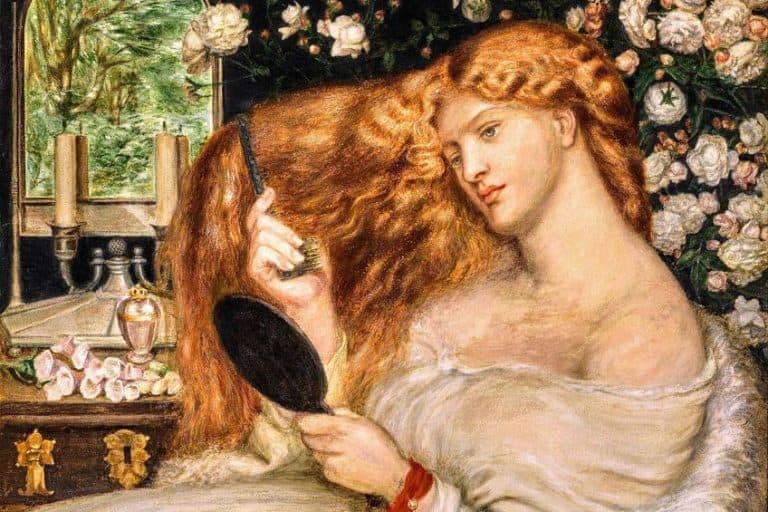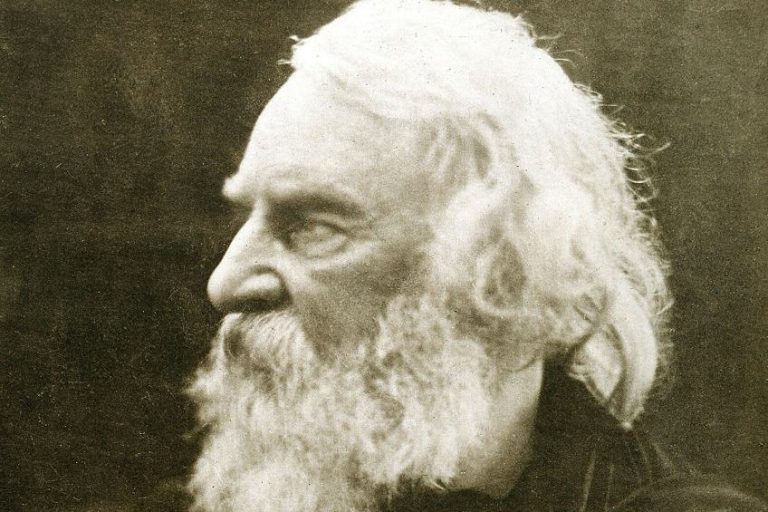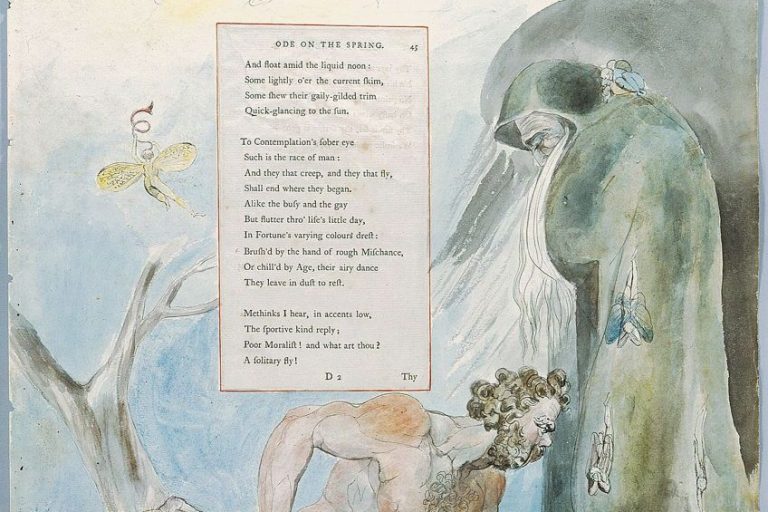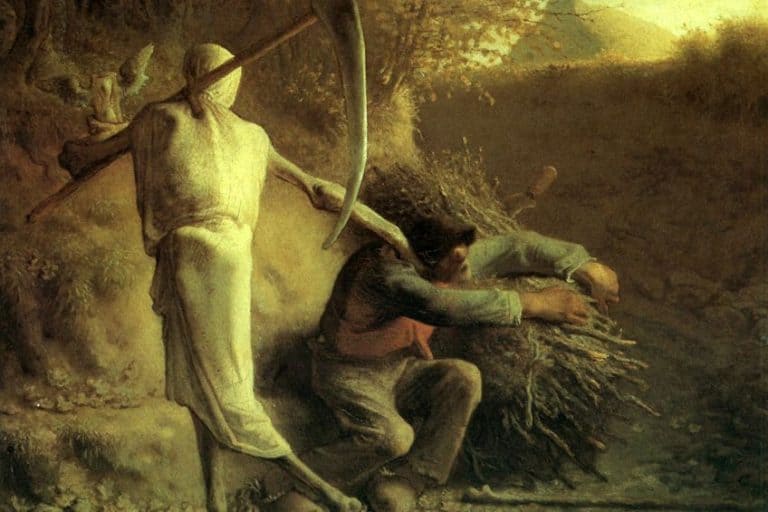Poetic Elements – 15 Literary Devices That You Should Know
What are poetic elements? How many poetic elements are there? Which poetry element affects the poem’s sound? There are many different ways of approaching and examining poetic elements, and we will look at those elements over the course of this article. We will examine what they are and why they are so important, before discussing a list of fifteen of the most prominent components of poetry. So, if you’re interested in learning something about some poetic elements, keep reading and see what you can also learn.
Table of Contents
What Are Poetic Elements?
Poetic elements are any techniques that are used in poetry that are specifically used to create some kind of effect. There are many different examples of poetic elements and some of them are far more famous than others. However, there are countless different poetic elements, and more could, possibly, be created. It also depends on how one defines a concept like “poetic element” when it comes to determining how many there are out in the wide world.

It should be worth noting that the term “poetic element” is an overarching term and there is no such thing as a singular “poetic element”. This is why there are a number of different elements of poetry, and while we are not going to look at every different type of element of poetry, we are going to examine fifteen of the most notable examples of poetry elements. Each of these poetic elements will then be explored in some level of detail to explain what they are and why they are used. So, let’s get started and have a look at fifteen different poetic elements.
Alliteration
This is one of the most famous of all poetic elements as it is the repetitious use of consonants. This simply entails the repeated use of consonants, such as expressions like: “She sells seashells by the seashore.” This kind of repetition of the letter “s” is one of the most famous examples of this particular element of poetry, but it can be found in many places outside of poetry. However, it is likely most associated with poetry as its use in prose can often appear more forced than it might appear in poetry.
Alliteration is used in many poems for many different reasons. It can be used as a means of emphasizing an idea or point, or it could simply be used for more aesthetic purposes as an alliterative section does sound a lot better than a section that does not make use of it.
There is sometimes some confusion between alliteration and assonance as the former is a lot more famous, but assonance is the same basic idea but with vowels instead of consonants. Vowels are far less common, overall, than consonants as there are only five of them in the English language. However, both alliteration and assonance involve the repetition of specific letters associated with specific sounds.
Enjambment
Enjambment is a poetic element that is likely lesser-known to those less familiar with poetry in general. We tend to assume that when reading poetry, each line is read deliberately and there is a slight pause after each line. Enjambment goes against that idea. The idea behind enjambment is that it allows the idea that is explored in one line to be transferred to the next line. This also means that the way in which you read a poem that uses enjambment is significantly different from the way you read a poem that does not use this particular element of poetry. You read it as if it’s prose. You read it like a continuous sentence, and you only stop when you read parts of the poem that would indicate a pause, such as full stops.

This particular poetic element can be used for a variety of reasons and to produce a number of different effects. If you, as a poet, want to make a poem that reads like a statement, then you would use enjambment. This can improve flow and make a reading of said poem, essentially, feel like you’re reading a paragraph rather than a stanza. However, enjambment can also be used to produce a more distorted and confused reading. For instance, there are parts of T.S. Eliot’s The Waste Land that make use of difficult-to-read sections that make use of enjambment as a way of disorganizing our thoughts while reading said section.
Imagery
This term is essentially used to refer to the idea that a picture can be created through the words of a poem. Think of the phrase “a picture is worth a thousand words”, well, imagery in poetry is the use of those words to produce said picture. However, most poems do not contain a thousand words, and so the way in which imagery is used often needs to be quite economical to ensure that a metaphorical image is produced.
Much of the time, the senses can be used to produce a certain image.
For instance, describing the way that something looks, how it sounds, what it smells like, and so on are all ways in which a specific image can be invoked for a potential reader. Imagery can be used as a means of producing a more realistic image or something that can be used on a more symbolic level. There are many different reasons why a poem may wish to evoke certain imagery.
Irony
This is a somewhat common poetic element that is, perhaps, best known outside of poetry. However, this element of poetry simply entails a certain contrast between what one might expect out of something and what is actually said/told/happened. For instance, it would be ironic, in the real world, for an ambulance to hit someone on the road. The irony comes, quite obviously, from the fact that an ambulance is meant to heal and ironically hurt someone instead of that.

This can be used in poetry for a number of different reasons. It could be used as a means of exploring more complex ideas that may present difficult or contrasting issues, or it could simply be used as a way to highlight something strange or ridiculous. A good example of irony is found in Ozymandias by Percy Bysshe Shelley, which tells the story of a grand statue that has an inscription. The inscription tells all who look upon it to be in awe and fear at the sight of the grand works that the subject of that statue created. However, everything around the statue is gone now. The great works that this character created have been swept away over the course of thousands of years. His words are ironic because of what sits beside them.
Meter
This particular concept is one of the most common and notable poetic elements. This is the way in which a poem is structured around metrical units. These units refer to the stressed and unstressed use of syllables, and there are many different types of meter that can be found in poetry. The most common of all the types of meter in the English language is iambic pentameter. This means that it makes use of an unstressed and then stressed syllable.
There are ten syllables in these lines with a short followed by a long syllable in five pairs of two.
The reason that meter exists is a way of producing a certain rhythm within a poem. This means that a poem that uses a meter will have a particular beat to it. However, it can be hard to learn to hear meter, and writing in meter can also be quite a difficult thing to do. It does yield fantastic and rhythmic results, though.
Mood
There are often comparisons made between mood and tone as they can be used quite interchangeably at times. This is worth keeping in mind when people use terms like “mood” and “tone” with regard to poetry, as they can often mean the same thing to many people. However, we are going to look at each of these ideas in this article as they are separate. We’ll first look at mood, and tone is closer to the end of this list. In very basic terms, the mood of a poem is the feeling or atmosphere that is created by said poem.

Essentially, this means that every poem makes use of some kind of feeling. Does it feel happy or sad? Does it feel tragic or funny? Does it feel dramatic or muted? There are many different feelings that a poem can exude, and those feelings are typically considered to form an integral part of the poem. The idea that a poem is exploring, the theme, often needs some kind of a mood to reinforce it. For instance, imagine a poem about sadness or death, and so the mood that suits that particular theme would, likely, be something darker, less rhyme-oriented, and more geared around the specific use of words and phrases that reinforce that particular theme.
Onomatopoeia
This is quite a common form in a language that entails a word that, in some way, mimics or produces a certain sound effect. This often means that onomatopoeia is a means of emulating something that already has a sound, such as words like “woof” or “meow”. These words sound like the thing they describe.
This can be used in poetry, and wider literature, to produce certain effects or ideas.
For instance, a poem that wishes to emulate the sound of a gunshot might use “BANG” within it. This can be used as shorthand, such as by using a word like “bang” without ever actually using the word “gun”. If you were to write something like: “He pulled it from his pocket and BANG”. You do not need to be told there was a gun, the onomatopoeic term did the heavy lifting for you.
Paradox
A paradox is, quite simply, any kind of a statement or idea that is contradictory. This can be used to fantastic effect within a poem in a great many ways. For instance, paradoxical thinking is something that humans are capable of attaining. So, a poem might make use of this kind of an idea, such as by presenting two conflicting ideas simultaneously. The poem is using the paradox to explore an idea that might, for instance, be difficult, uncertain, or uncomfortable to discuss.

In addition, this can also be done on a far smaller and more textual level, especially for the purpose of creating certain imagery. This can be seen when this poetic element is used in the form of an oxymoron. This concept involves the use of two contradictory concepts linked together, such as a “silent explosion” or a “still blizzard”. However, the paradoxical nature of these ideas can produce a certain idea, for instance, a silent explosion may be impossible on Earth, but it could be used as a way of describing the kind of dissociation one might feel when seeing a massive explosion. The sound seems to disappear as you simply stare at this explosive force.
Repetition
Repetition is used in a lot of poetry. So far as poetic elements go, repetition is one of the truly major ones. This, on its own, simply refers to the way in which ideas, words, sounds, or phrases can be repeated in a poem. The reason that repetition is such a major concept in poetry is that many other poetic elements fall under the general purview of “repetition”. For instance, rhyme is the repetition of a certain sound, alliteration is the repetition of consonants, and so on.
Repetition is found throughout poetry, and it can often be used as a means of reinforcing or emphasizing an idea, or it can be used for effect.
The ridiculous repetition of repeated run-on sentences represented in a repression-oriented poem can lead to a very different feeling than if that repetition did not exist. Repetition also simply sounds good. It makes a poem flow and feels a lot better to read or listen to. So, while repetition can have very thematic purposes, it can also exist as a means of improving the flow and rhythm of a poem.
Rhyme
Rhyme is probably the poetic element that most people associate with poetry. Poems do not require rhyme, but it does tend to be something that we intrinsically link with poetry because most of the famous poetry happens to also rhyme. Rhyme is also found in practically all traditional poetry, and many types of poetry are specifically oriented around specific rhyme schemes. For instance, a sonnet is generally defined through the number of lines in the poem and those lines then correspond to a specific rhyme scheme, such as a Shakespearean sonnet having an ABAB CDCD EFEF GG rhyme scheme.
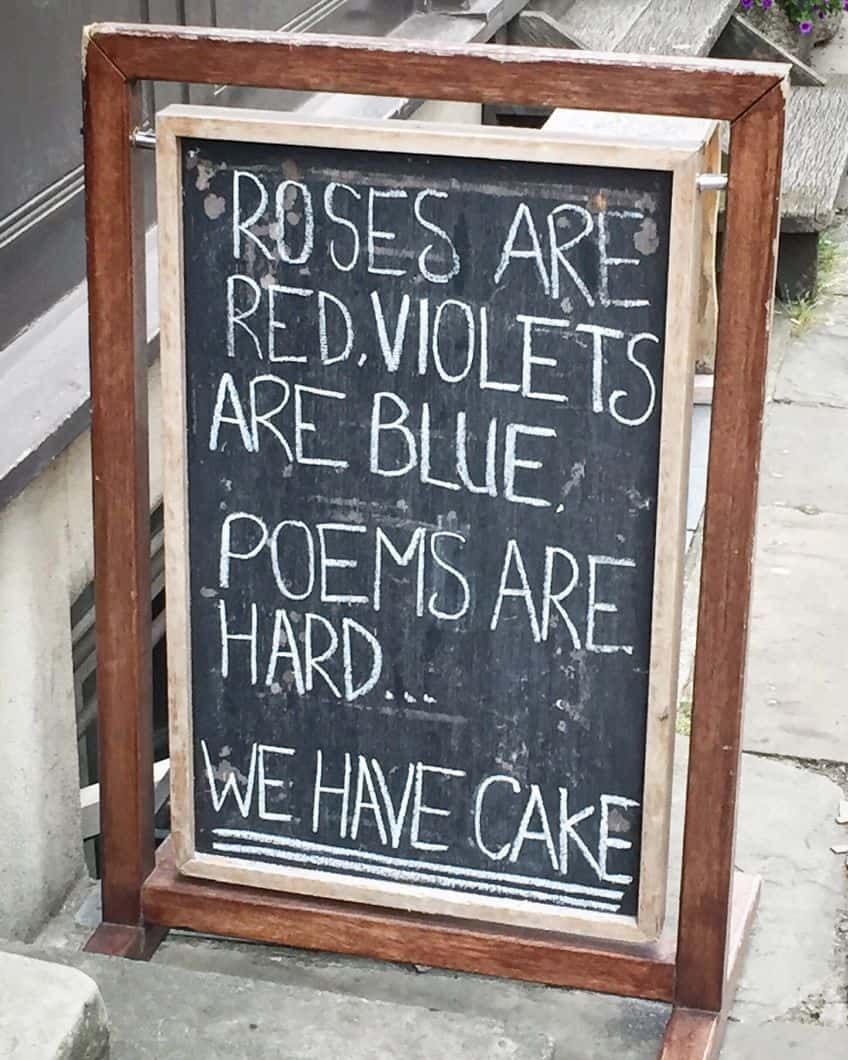
Rhyme simply involves the repetitious use of certain sounds, and these sounds are often added to the end of lines. Most poems that use rhyme use end-rhyme, but rhyme can be found anywhere throughout a text. For instance, there are rhymes that can be found at the start of lines or the middle of lines. One could, theoretically, make a line comprised entirely of rhyming words (although that would be difficult to sustain). However, rhyme has remained one of the most famous and prominent poetic elements and will likely remain that way forever.
Syntax
This is a very common concept and one that is, in no way, exclusive to poetry. This is one of the most important poetic elements because it is one that forms one of the integral components of poetry. A poem can exist without the use of alliteration or assonance, but not without syntax. This is a linguistic concept that refers to the specific arrangement of words and phrases within sentences. Syntax is found in ordinary language, prose, drama, and every other means of human communication. The only way in which it could not exist is if one were to use non-sentence communication, such as by using single words. Even then, the order in which singular words are uttered could still constitute a form of syntax.
For this reason, there is no single example of parts of a poem such as this.
These kinds of poetic elements are found in every single poem. Does the poem make use of a specific order that leads to rhyme? Why does it do so? Does a poem make use of a specific order that leads to a specific meaning? Is there a specific reason for that specific order? However, syntax is often highlighted in poetry in a way that it isn’t highlighted in a great many other examples of language usage because poetry often calls language to attention and uses it far more precisely than one would in terms of ordinary communication. This is often because of limited space, such as in a sonnet. You only have fourteen lines. You need to make it count.
Symbolism
This is one of the most common poetic elements, and one of the best known, as a great many different poems tend to make use of more symbolic representations. This can be found in the use of metaphorical language. While there are poems that prefer to depict something in a realistic sense, like Sujata Bhatt’s Muliebrity, which attempts to realistically portray and record an event, most poems prefer to use various symbolic points to try to make a further point.

Take a poem like Shall I compare thee to a summer’s day as an example. This immensely famous Shakespearean sonnet is considered to be one of the most famous poems in the English language. However, the poem makes use of metaphorical language. It directly compares the beauty of a person to the beauty of a stunning day. It uses the symbolic representation of a summer’s day or, more specifically, a good summer’s day, to make the reader feel a certain way. A person cannot look like a summer’s day, but if you were to make that comparison, others would understand what you meant by it because we know the feelings that are induced by a good and pleasant day.
Tone
The tone is the basic emotion or attitude that is expressed by a poet through the specific language that they use. Tone and mood are often viewed as synonymous, but arguments can be made that they are distinct from one another. Tone is generally oriented around the specific arrangement of words, syntactical elements, and the overall style of the poem as a whole. What is the poem trying to convey to you through the words that it uses? Why did the poet make use of those particular words? Were they trying to make you happy? Were they trying to confuse you? Were they trying to scare you?
There are many different uses of the tone in a poem, and it is one of the most important parts of a poem.
Every poem is meant to make you feel a certain way, and the tone and mood operate together to contribute to the specific way in which the poem is arranged. There are many different ways that a tone can be implemented. A poet may decide to make use of shorter and snappier lines that lack enjambment to create a faster pace, or a poet may make use of intentionally dark and dreary terms to reinforce a more horrifying or tragic tone to the poem as a whole. It is important for a poet to understand the correct way to present their poem to a potential reader by making use of a tone that makes sense within the context of the poem. For instance, you wouldn’t want a jokey and light-hearted tone in a poem about death (or at least, not ordinarily).
Theme
Themes are poetic elements that are found in every instance of poetry as every poem has to be about something. A theme is that thing. It is what a poem is about in some or another sense. There are many different themes that a poem could explore and for different reasons and in different ways. For instance, there are themes such as love or tragedy. These can be used or explored in many ways. A poem about love will use language in such a way that it can orient it around that particular theme. The same is true of every other theme.
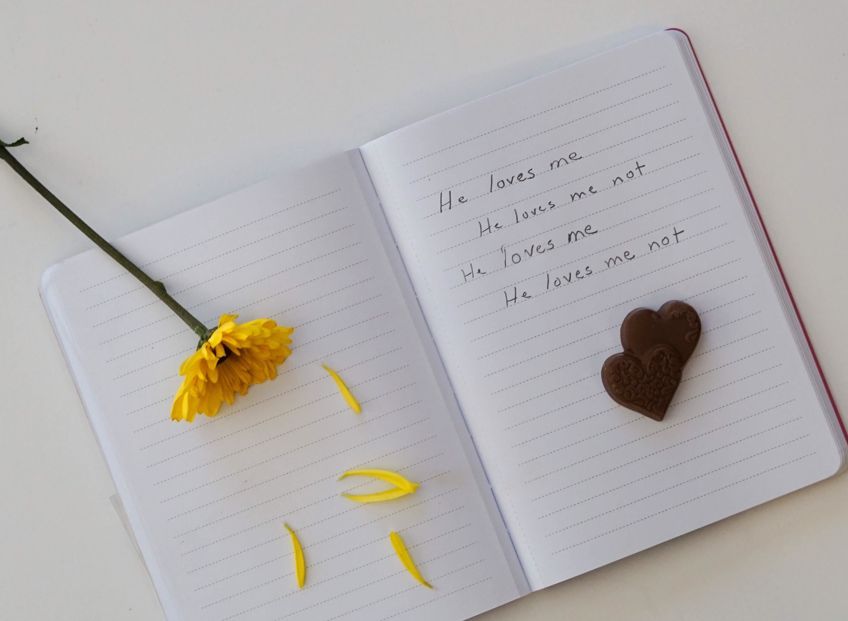
An example could be something like a carpe diem poem like Andrew Marvell’s To His Coy Mistress. This poem explores the themes of romance, sex, and living in the moment. For this reason, it is arranged in such a way that each general part of the poem has a different basic purpose, such as one focusing on the way in which everything eventually comes to an end and dies, and this ultimately leads to the final conclusion of the poem that is to try and convince someone that waiting around is not worth it as we could die at any moment. The theme requires the use of many other poetry elements, such as the use of imagery, figurative language, and mood. All of these poetic elements and more contribute to the overall theme of this particular poem. This is the case with every poem.
Typography
This is a term that refers to the specific arrangement of the text in a poem. We generally know how to recognize a poem upon seeing one because the lines do not run to the end of the page and carry on over onto the next line. The lines are instead cut off so that the next lines start more prematurely. However, that is the typography of a standard poem. The use of stanzas, whether there are gaps between sections, and so on, are all aspects of this particular component of poetry. These are not the only means of using this particular poetic element.
Typography can also be used more creatively.
The way this can be done is by arranging the parts of a poem in a more disjointed manner. Maybe the stanzas are all of differing sizes, sometimes the lines are of vastly varying lengths or the lines might even start further up a page, such as by leaving several spaces before starting a line, or a poem could simply be presented in a specific shape, such as a love poem in the shape of a heart. There are many different reasons to alter the typography of a poem. It could be for cute reasons, like the above mentioned heart poem, or it could be as a means of distorting what already exists. In addition to this, the typography of some poetry, such as the work of Rupi Kaur, is supplemented with illustrations.
How to Use the Elements of Poetry
There are many different elements of poetry, as has been discussed above, and each of these different poetry elements has a very different purpose and means of manipulating them. The only real way that you will learn how to use any poetic elements is by experimenting with them. It is also good to have a working knowledge of poetry. If you read poetry, you will learn more about poetry. This will help you to know when to use some of the different poetic elements for different reasons. There is no correct or incorrect way to use any of these poetic elements, though.

If you look at more traditional poetry, like William Shakespeare or the Romantics, and you then look at the work of ee cummings, you will see vastly different means of presenting different components of poetry in all manner of different methods. So, ultimately, you need to learn some of your poetic elements, read some poetry, and then experiment with them yourself. Try them out and see what you are able to produce, what you are able to come up with.
We have come to the end of our examination of fifteen of the different poetic elements that exist. There are many other elements of poetry, but this should be a good overview of some of the most prominent and significant examples of the different parts of a poem. Hopefully, you have learned a good deal about some of these poetic elements and, if you are so inclined, perhaps you could even try to use some of them yourself!
Frequently Asked Questions
What Are Poetic Elements?
Poetic elements are any techniques that can be found within poetry that create some kind of a feeling, structure, idea, and so on. The term is intentionally broad as it is used as a categorization label under which many different techniques form a part, such as rhyme, alliteration, and theme. The elements of poetry are used in a number of different ways for a variety of purposes.
How Many Elements of Poetry Are There?
There is no real answer to a question like this, as they can be classified in a number of ways or, theoretically, new ones could be developed. Some of the most common poetic elements include meter, rhyme, rhythm, and imagery. There are a great many other components of poetry that can be investigated and used.
Which Poetry Element Affects the Poem’s Sound?
There are a number of different poetry elements that affect the sound of a poem. For instance, the use of meter in a poem can alter the overall flow, and therefore the sound, of a poem. In addition, rhyme, alliteration, and so on are also good examples of poetic elements that affect sound. The ones that do not affect sound include imagery and theme. However, these poetic elements may require other poetic techniques that will affect the sound.
What Is the Most Famous Poetic Element?
It is likely that rhyme is the most famous poetic element. This does not actually mean that it’s the most prominently used, as there are many poems (especially contemporary ones) that do not use rhyme at all. However, usage does not necessarily mean the same as fame, and there tends to be an association between rhyme and poetry. We often act as if they are connected even if there are innumerable poems in the world that do not make use of any rhyme whatsoever.
Can a Poem Exist Without Poetic Elements?
If we take poetic elements to mean what we have defined them as in this article, then it is impossible for a poem to exist without poetic elements. However, some forms of poetry, such as free verse, tend to be inherently against certain traditionally-used poetic elements, such as rhyme. This does not mean that there will be no poetic elements in such poems, but it does mean that they eschew the usual examples of poetry elements.
Justin van Huyssteen is a freelance writer, novelist, and academic originally from Cape Town, South Africa. At present, he has a bachelor’s degree in English and literary theory and an honor’s degree in literary theory. He is currently working towards his master’s degree in literary theory with a focus on animal studies, critical theory, and semiotics within literature. As a novelist and freelancer, he often writes under the pen name L.C. Lupus.
Justin’s preferred literary movements include modern and postmodern literature with literary fiction and genre fiction like sci-fi, post-apocalyptic, and horror being of particular interest. His academia extends to his interest in prose and narratology. He enjoys analyzing a variety of mediums through a literary lens, such as graphic novels, film, and video games.
Justin is working for artincontext.org as an author and content writer since 2022. He is responsible for all blog posts about architecture, literature and poetry.
Learn more about Justin van Huyssteen and the Art in Context Team.
Cite this Article
Justin, van Huyssteen, “Poetic Elements – 15 Literary Devices That You Should Know.” Art in Context. September 7, 2023. URL: https://artincontext.org/poetic-elements/
van Huyssteen, J. (2023, 7 September). Poetic Elements – 15 Literary Devices That You Should Know. Art in Context. https://artincontext.org/poetic-elements/
van Huyssteen, Justin. “Poetic Elements – 15 Literary Devices That You Should Know.” Art in Context, September 7, 2023. https://artincontext.org/poetic-elements/.





